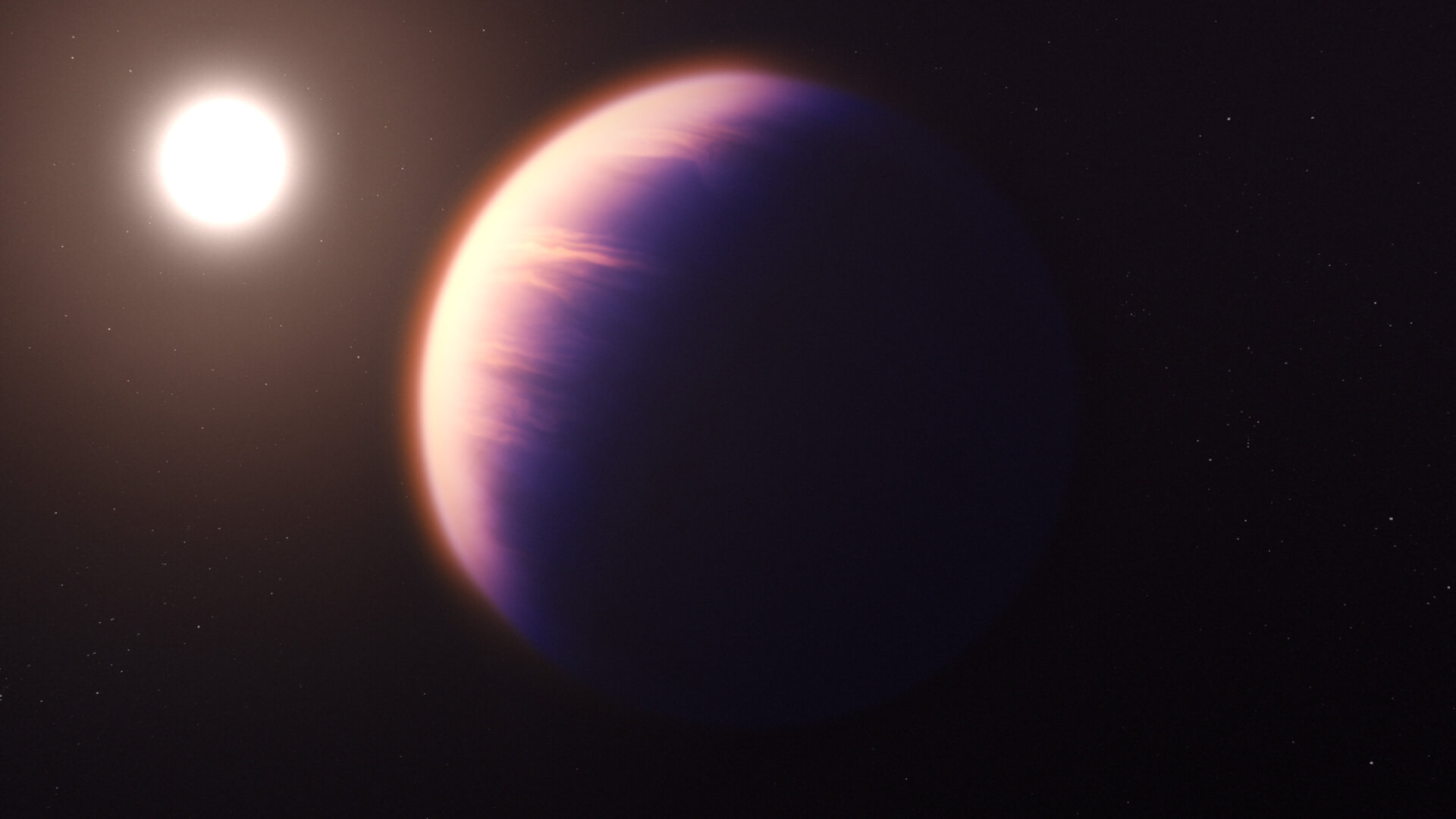Once again, the James Webb telescope is proving what incredible results it can deliver. Just a few days ago, its sensitive instruments were able to provide evidence that carbon dioxide is present in the atmosphere of a planet outside our solar system.
Discovered in 2011, WASP-39 b is located 700 light-years from us and is a Jupiter-like gas giant. At 1650 degrees Celsius, it is quite hot, due to its close distance from the host star.
The NIRSpec instrument was used to study the chemical composition of WASP-39 b during a transit. During this transit the planet orbits its star in such a way that it passes in front of the star for a short time as seen from Earth.
Venus and Mars have predominantly carbon dioxide in their atmospheres, but WASP-39 b is the first time that this gas has been detected on an exoplanet. The molecules provide insights into the formation of this planet.
The researchers hope that the James Webb Telescope will soon find methane – an important gas in connection with biosignatures.
Carbon dioxide found on an exoplanet by the James Webb telescope

